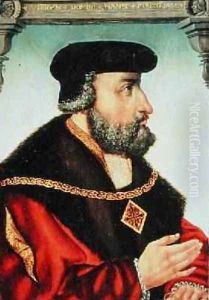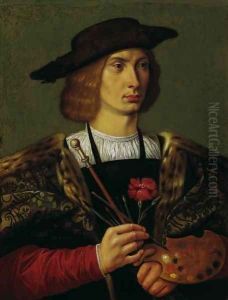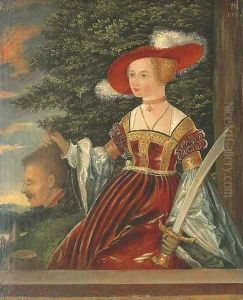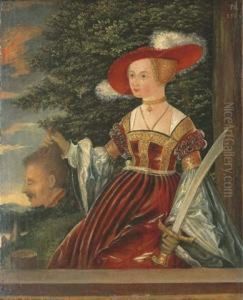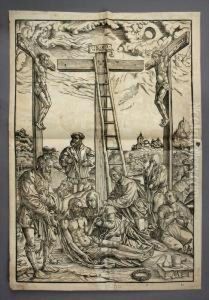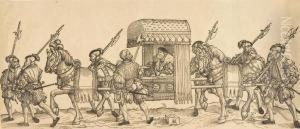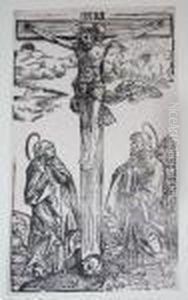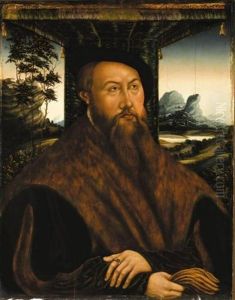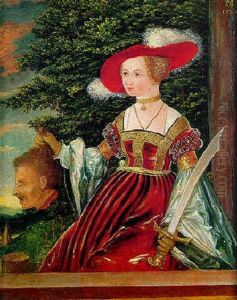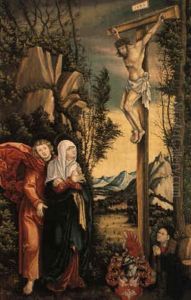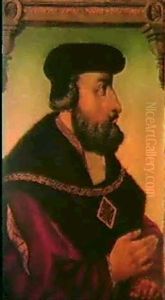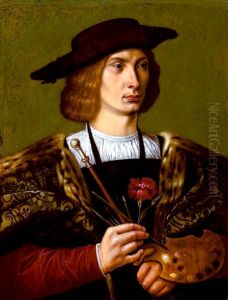Michael Ostendorfer Paintings
Michael Ostendorfer, also known as Michael Ostendorfer of Regensburg, was a notable artist of the German Renaissance whose work spanned various forms of visual arts including painting, drawing, and particularly woodcut printmaking. Born around 1490, Ostendorfer's early life remains somewhat obscure, but it is believed that he may have been trained in the workshop of the renowned artist Albrecht Dürer, which would have provided a strong foundation in the techniques and styles of the Northern Renaissance.
Ostendorfer is primarily known for his work in Regensburg, a city in Bavaria, where he was active from 1519 until his death in 1559. He became a citizen of the city in 1521, and this period marks the beginning of his most productive phase. His role as a master painter and printmaker involved producing altarpieces, portraits, and devotional images, as well as participating in the decoration of public buildings and private commissions. His art reflects the transition from the late Gothic to the Renaissance style, and he was particularly adept at capturing the human figure with a sense of individuality and expressiveness.
Notably, Ostendorfer is remembered for his woodcuts, which were widely disseminated and influential. His prints often depicted religious subjects, but he also produced works that commented on social and political issues of his time. For example, his series of woodcuts illustrating the destructive impact of the Peasants' War in Germany (1524-1525) is considered an important historical document that portrays the turmoil of the period with both empathy and a critical eye.
The Reformation had a profound impact on Ostendorfer's life and work. Living in a period of religious upheaval, his art reflects the changing attitudes towards religious imagery. He worked under the patronage of both Catholic and Protestant clients, demonstrating a certain degree of adaptability in his approach to religious themes.
Michael Ostendorfer died in 1559 in Regensburg. Although not as widely known as some of his contemporaries, his contributions to the art of the German Renaissance, particularly in the field of printmaking, make him a significant figure. His body of work provides valuable insight into the cultural and religious shifts of 16th-century Germany.
